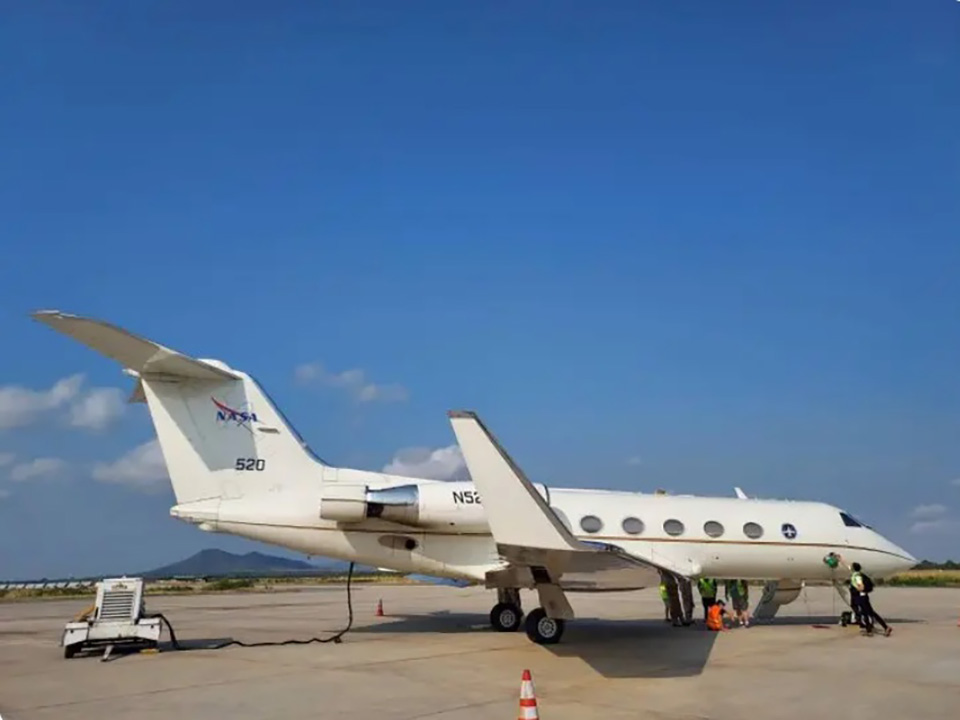
DC-8 aircraft, an iconic 55-year-old plane known for its extensive research capabilities, conducted its final flight over Chiang Mai province on Monday (March 18) as part of an air quality study in the North and various parts in Thailand.
According to the National Astronomical Research Institute of Thailand (NARIT), the flight, part of the Airborne and Satellite Investigation of NASA’s Asian Air Quality (ASIA-AQ) project, was conducted with the aim of analyzing air pollution dispersion at various atmospheric levels. The aircraft executed a low-altitude ‘missed approach’ maneuver over the province at 10:30 am, a technique crucial for collecting detailed environmental data.
This mission is one of the last for the DC-8, which will be retired after completing a series of five flights between March 16 and 26. Each flight, originating from U-Tapao Airport in Rayong, lasted about eight hours and surveyed different parts of Thailand. The project is a collaborative international effort to improve understanding of air pollution, with NARIT and the Geo-Informatics and Space Technology Development Agency (GISTDA) representing Thailand alongside partners from South Korea, Taiwan, the Philippines, Malaysia, and Thailand.
In addition to the DC-8, NASA employs a Gulfstream III aircraft for complementary studies, focusing on creating a horizontal profile of air quality. Both aircraft take off from U-Tapao Airport, though the Gulfstream III operates within a more confined area. (NNT)








